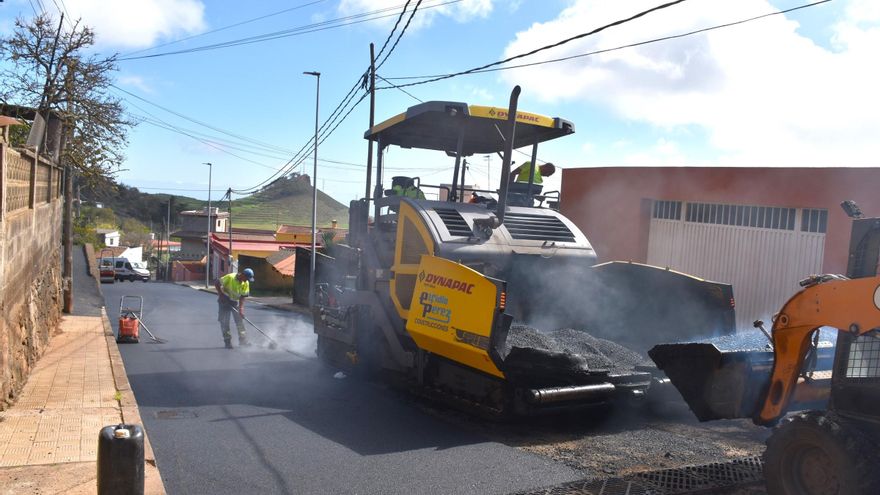
The stripped loin nuclei and part of Las Rosas, in the rosary, marks the completion of the first sanitation network following two and a half years of work. Previously, local residents disposed of their wastewater via black wells, a common practice in the dispersed housing communities across the Canary Islands, which poses environmental risks through potential spills or leaks.
The final phase of this initiative, with an investment of 3.5 million euros, covers an area of approximately five kilometres of public roads. These works, which commenced a few weeks ago, involve the laying of new pavement across nearly the entire Bishop neighbourhood, with partial coverage in Las Rosas.
The mayor of El Rosario, Gil Scholastic, highlighted that this project “ensures a safer and more sustainable municipality, not only preventing any potential discharges that could harm our environment but also enhancing water usage, as we have simultaneously integrated a new stormwater and supply network alongside the sewer system.” He also mentioned improvements in the infrastructure for water lifting in the stripped loin area, from La Parra to the mountain tank, in conjunction with much of the water supply network serving all hope and other nuclei.
“We are working towards the goal of zero spills throughout our municipality, a target that is becoming increasingly achievable and will significantly enhance the quality of life for residents and protect our subsoil from pollution,” said Gil.
Given the scale of the construction programme, the works have been executed in various phases. Currently, they are taking place on Elías Vera and Doctor Caldera Streets. Additionally, the city council of El Rosario has pointed out that following the resurfacing and new road signage, the area will gain 125 parking spaces, increasing from 87 to 212.
The construction of the separate sewer network for stripped loin and the wastewater pumping station will allow 800 residents to channel their wastewater into a sewage network that connects to the main collector along the La Esperanza-Llano del Moro highway (TF-272), directing it towards the Buenos Aires treatment facility in Santa Cruz.
“It’s important to note that this is an initiative costing a significant 3.5 million euros, involving critical infrastructure that is subsidised by the Ministry of Ecological Transition and the Fight against Climate Change and Territorial Planning of the Government of the Canary Islands, with additional municipal contributions,” stated the city council of El Rosario.
Four Phases
In light of the significance of this initiative for the area, awarded to Construcciones Elfidio Pérez Sociedad Limitada-Geotechnical Obras of the Canary Islands Limited Society, the project has been broken down into four phases, progressively advancing through Elías Vera, Bethencourt, Perera, Doctor Caldera, Transversal Doctor Caldera, and a preventative stretch, as well as along the roads of the centre, the lagunets, and the jet. An additional section has been added, spanning between the Hope Highway (TF-24) and the rear of the Hermitage of Las Rosas.
Along with the primary drainage and sanitation networks, registration wells and imbornals, the wastewater pumping station was constructed on the lower back of the stripped loin, adjacent to El Centro Road, with the expectation that it will not only collect water from this neighbourhood but also that of the nearby Las Rosas, directing all of it to the aforementioned general collector of the TF-272.
















